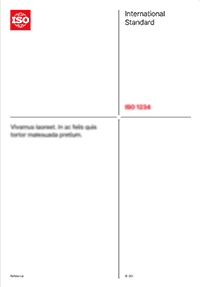Abstract
ISO/TS 12901-2:2014 describes the use of a control banding approach for controlling the risks associated with occupational exposures to nano-objects, and their aggregates and agglomerates greater than 100 nm (NOAA), even if knowledge regarding their toxicity and quantitative exposure estimations is limited or lacking.
The ultimate purpose of control banding is to control exposure in order to prevent any possible adverse effects on workers' health. The control banding tool described here is specifically designed for inhalation control. Some guidance for skin and eye protection is given in ISO/TS 12901‑1.
ISO/TS 12901-2:2014 is focused on intentionally produced nano-objects such as nanoparticles, nanopowders, nanofibres, nanotubes, nanowires, as well as of aggregates and agglomerates of the same. As used in ISO/TS 12901-2:2014, the term "NOAA" applies to such components, whether in their original form or incorporated in materials or preparations from which they could be released during their lifecycle.
ISO/TS 12901-2:2014 is intended to help businesses and others, including research organizations engaged in the manufacturing, processing or handling of NOAA, by providing an easy-to-understand, pragmatic approach for the control of occupational exposures.
General information
-
Status: PublishedPublication date: 2014-01Stage: International Standard to be revised [90.92]
-
Edition: 1Number of pages: 31
-
Technical Committee :ISO/TC 229
- RSS updates
Life cycle
-
Now
-
Will be replaced by
Under developmentISO/DTS 12901-2


